
How To: Say the days of week in Spanish
This is a video lesson on the days of the week, months, and dates in Spanish. Listen, repeat, and rewind as needed.


This is a video lesson on the days of the week, months, and dates in Spanish. Listen, repeat, and rewind as needed.
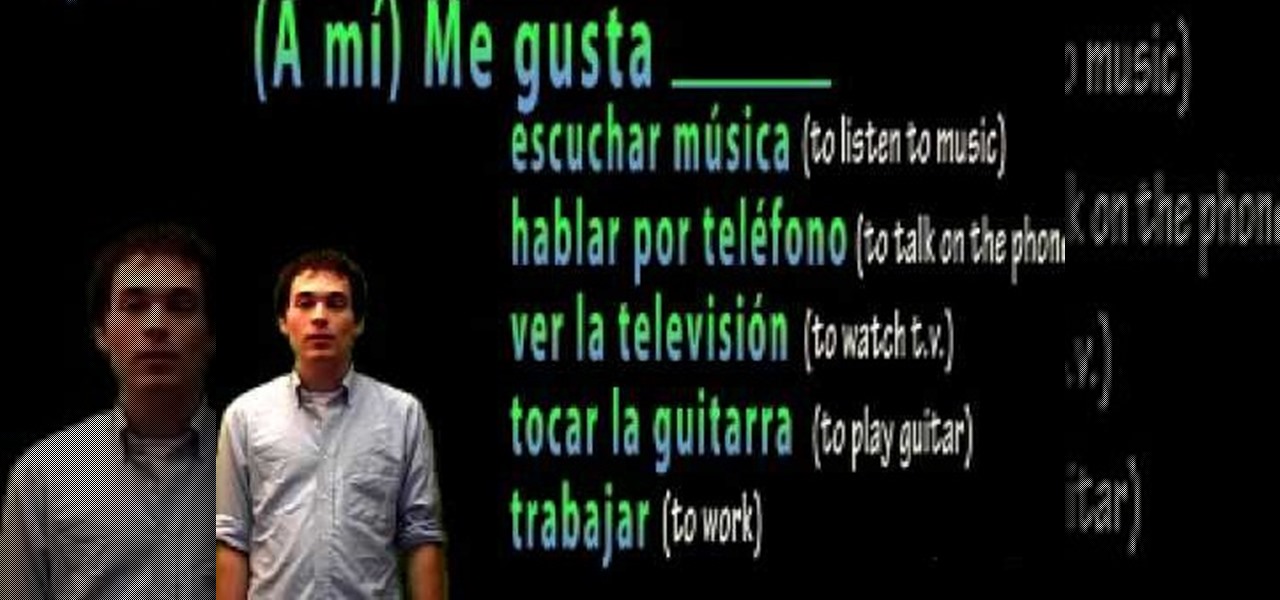
In this video, we learn how to speak Spanish: "me gusta" (I like). First, you will need to learn how to form sentences. After saying "me gusta", you will need to say a verb that you like to do. These include: "nadar" (to swim), "practicar deportes" (to practice sports), and "estudiar" (to study). These are just a few of the many words you can use for verbs. An example of a sentence would be "me gusta tocar la guitarra" (I like to play guitar). If you would like to say you don't like to do som...
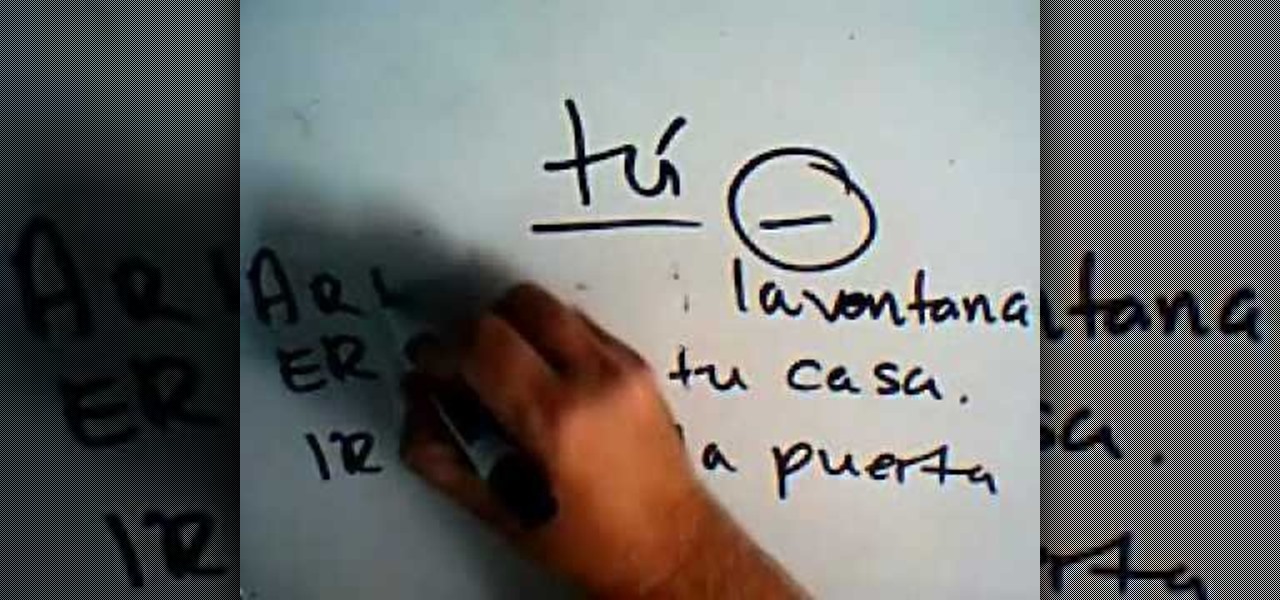
In this video, we learn how to make Informal and formal commands in Spanish. When you speak in first person singular, you will say "yo" when you speak in plural, you will say "nosotros". These are both informal or familiar forms of the word. When you are speaking to someone that is a elder, you will want to speak in formal instead of informal. Use informal mode when you are talking with friends, family, children, and anyone else you talk to in a daily basis. Pay attention if you are talking a...
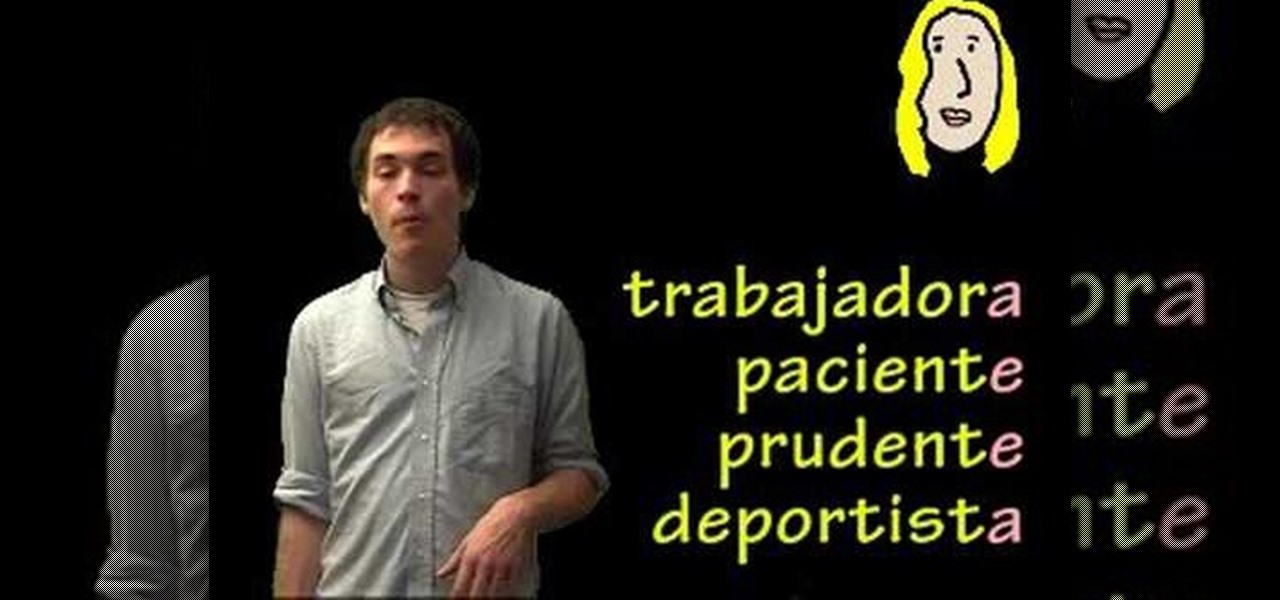
In this video, we learn how to speak Spanish by describing personality. There are many words to express personality and how you are. Some of these words include "generoso" (generous), "simpatico" (nice), and "ordenado" (organized). The most common ending to words is "o", which can be used to describe yourself. Only a few words will end in "r", "e", or "a". The end of the word is important because it tells us the gender of the word. This means the adjectives will change depending on who they a...
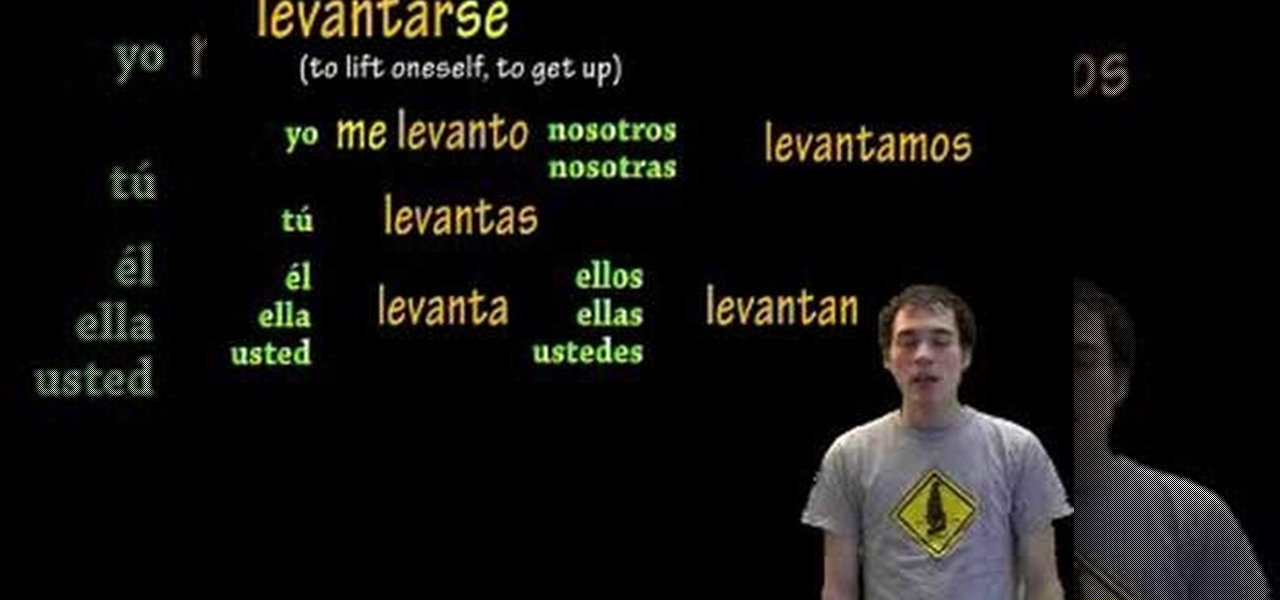
In this video, we learn how to use reflexive verbs in Spanish. All of the reflexive verbs are related. Once you have your verb changed, you will have to change how you are saying the different words in the sentence. If you are talking about yourself, you will have to make sure you take out "es", so you aren't saying the sentence incorrectly. If you are calling yourself something, you are reflecting the verb back to yourself. I you want to say "I talk", you will say "yo habo", because you are ...
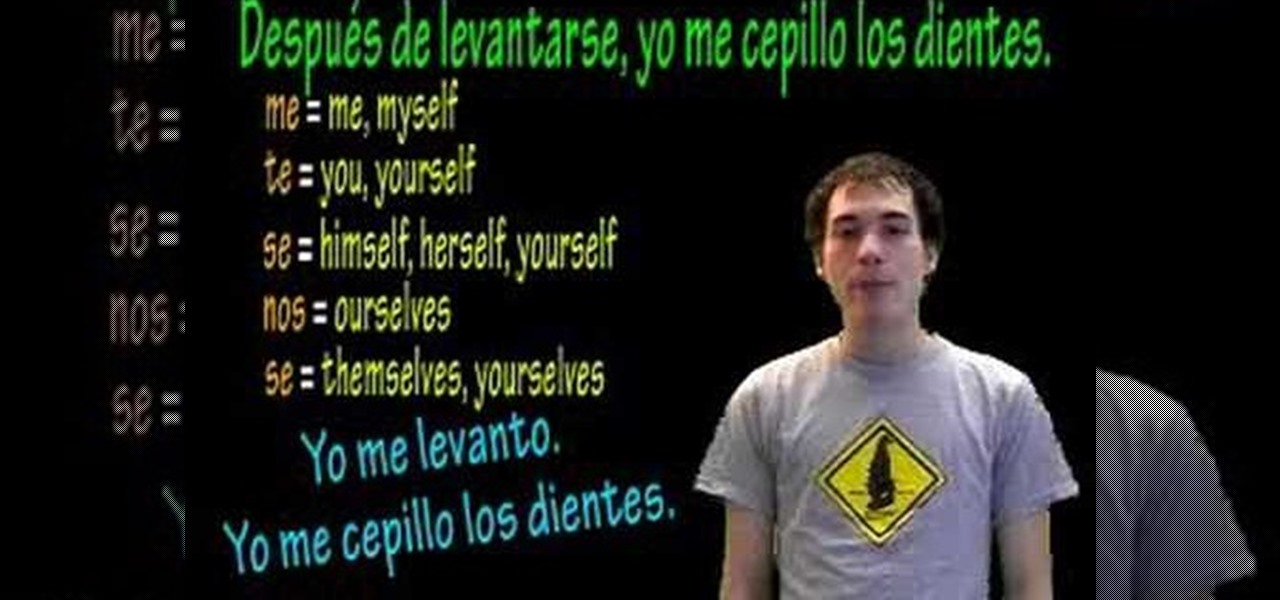
In this video, we learn how to speak Spanish: Antes de / DespuŽs de + verbs. When you say "antes de" this means before and "despues de" means after. Saying these in sentences can help describe doing something at a specific time. The formula for this is to have the "antes/despues de" + an infinitive. Learning some basic reflexives can help you describe what you are doing. For example, "levantarse" means to get up. You will change the tense of the verb depending on when you did it, then change ...

In this video, we learn how to speak Spanish: Present tense of -AR verbs (tu form). When you are speaking with "ar" verbs, you will have to change them depending on who you are talking about. You will also have to change if you are talking about yourself and depending on what the tenses are. If you are talking about yourself drawing, you would say "yo dibujo", which means "I draw". You will say "tu dibujas" if you are saying "you draw" to a group of people. Learn some common "ar" verbs, then ...
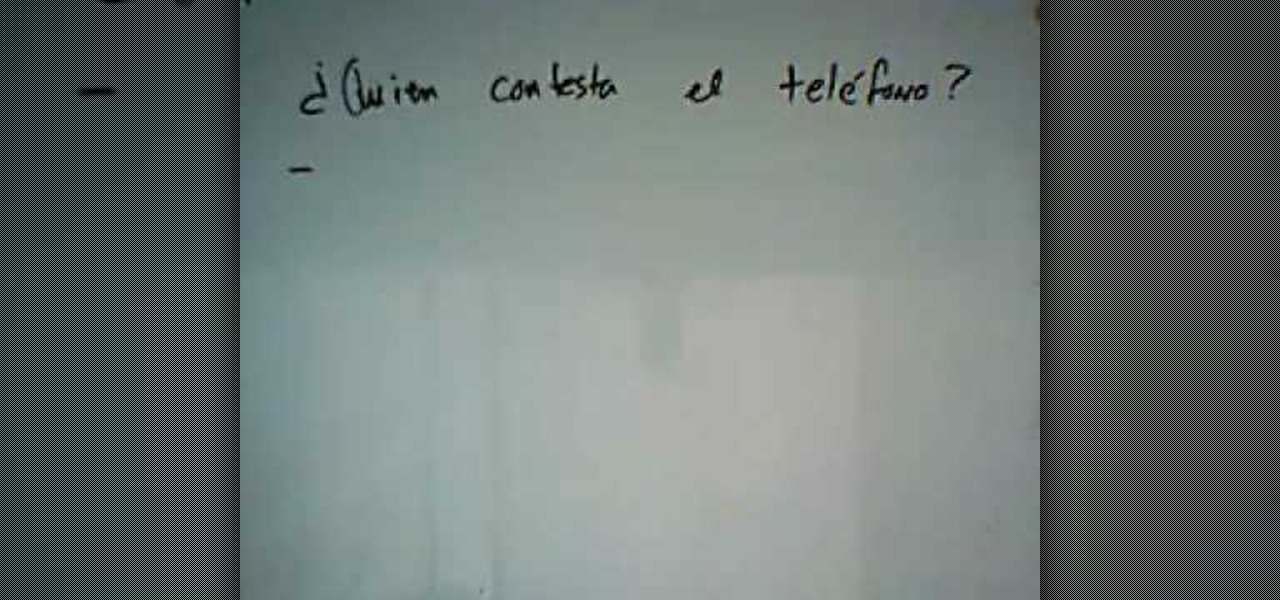
In this video, we learn how to use direct objects & direct object pronouns in Spanish. A direct object is the object of the subject inside of a sentence. An example of this is "yo contesto el telefono". The direct object in this sentence is "el telefono" and the subject is "yo". The direct object is the "what" of the sentence, not the who. Another example of this is "nosotros miramos las peliculas". In this sentence, the subject is "nosotros" and the direct object is "las peliculas". Pay clos...

In this video, we learn how to speak Spanish using present tense AR verbs. "Nosotros" means "we", "nosotras" means we as well, it's just talking about a female while the other is talking about a male. Common "ar" verbs include: necesitar, patinar, practicar, terminar, tocar, trabajar, nadar, hablar. These mean (in order): to need, to skate, to practice, to fish, to play, to work, to swim, and to talk. When you are talking about a male, female, or group of people you need to change the last pa...
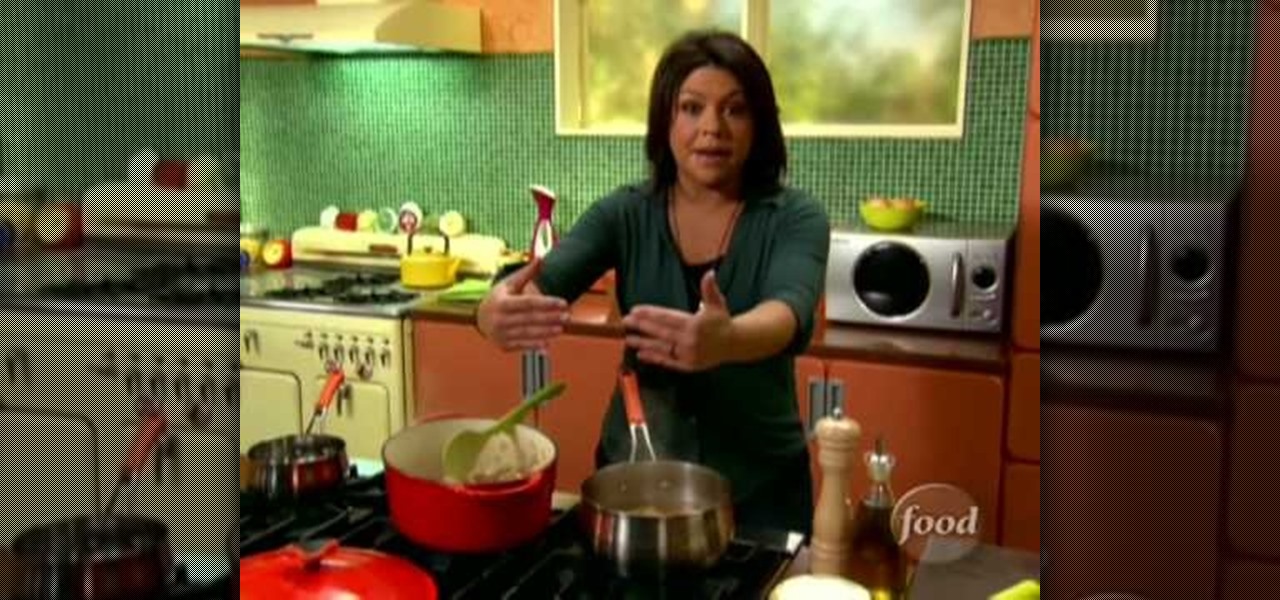
Chicken and dumplings are a great meal to make if you have a large family to feed and not too much time. Requiring only a few inexpensive ingredients, the dish is as close to a universal appetite pleaser as you will get.

Carne asada means nothing more than "grilled meat" in Spanish, and it can be prepared in a myriad of different ways to produce anything from chopped beef for a taco to a whole beef cut to be enjoyed with a side salad. If you're a beef man and/or are looking for a new recipe that'll be succulent on the grill, then check this one out.
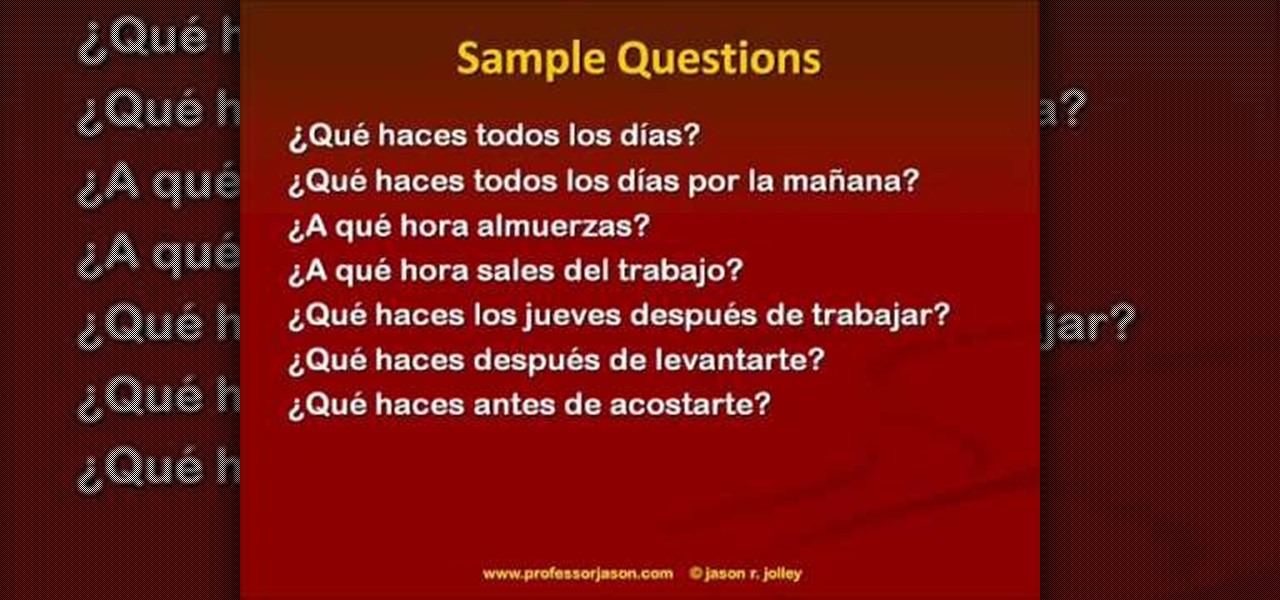
In this video, we learn how to talk about your daily routine in Spanish. First, you need to learn common expressions about doing things. The key verbs that talk about your typical routine include: "despertarse" (to wake up), "levantarse" (to get up), "banarse" (to bathe), and "ducharse" (to shower). These are just a few of the verbs you can use for your daily routine. Other activities include: "estudiar" (study), "cenar" (to have dinner), and "acostarse" (to go to bed). Make sure if you are u...
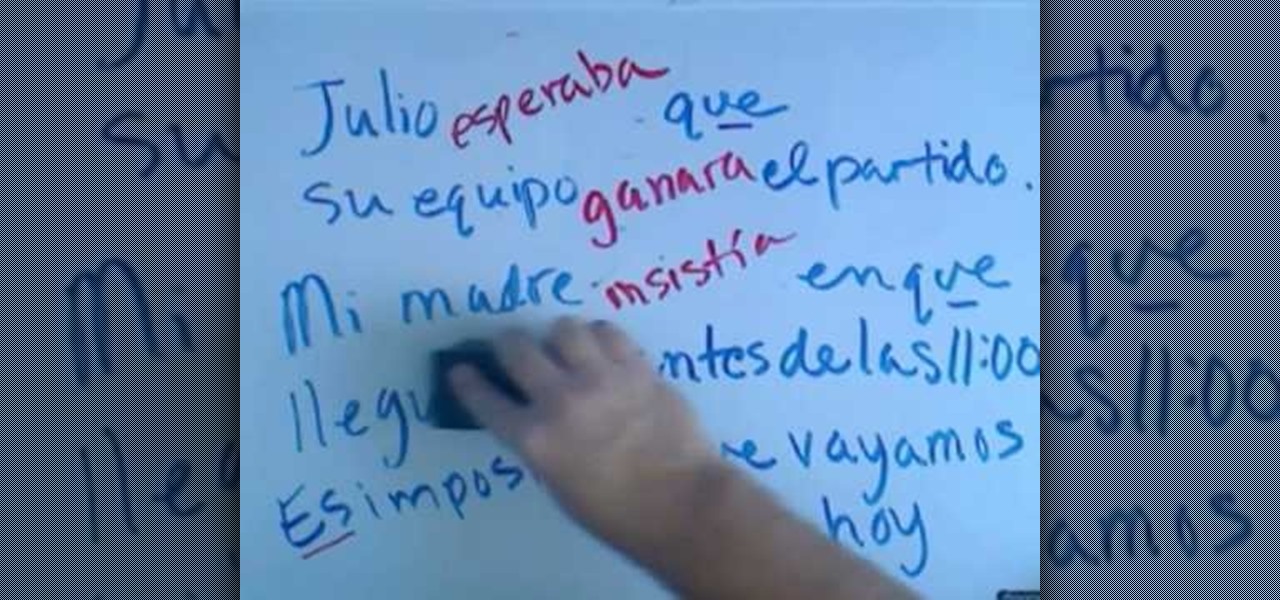
In this video, we learn how to use the imperfect or past subjunctive in Spanish. When you are speaking in first person, you are going to use the singular "yo". If you are speaking in plurals, you will us "os", such as "nosotros". For second person familiar, you will use "tu", then for second person formal you would say "usted". For third person, you will say "el". When you talk in second person familiar and formal you will stress the second syllable in the word. Dissect the sentence to find o...

In this video, we learn how to speak Spanish by using the present tense of AR verbs. For females, "ellas" means they and for males "ellos" means they. To say "you all" you would say "ustedes". For example, the word "trabajar" would knock the "ar" off depending on who was the subject in the sentence. It would be replaced with "o", "as", "a", etc depending on who was being talked about. This goes the same for every verb that ends in "ar". The tense must change when you are talking about singula...

Follow along as Angie makes a hearty Spanish tortilla, with potato, eggs and chorizo. This cooking how-to video is part of Easy Meals, Good Deals show hosted by Angie Ketterman. Watch as she takes on the challenge to create dishes that save you time and money. You'll love the quick and budget-friendly recipes. Gather some Spanish style chorizo, eggs, onions, potatoes, red peppers, garlic, and cilantro and prepare this Spanish tortilla recipe.
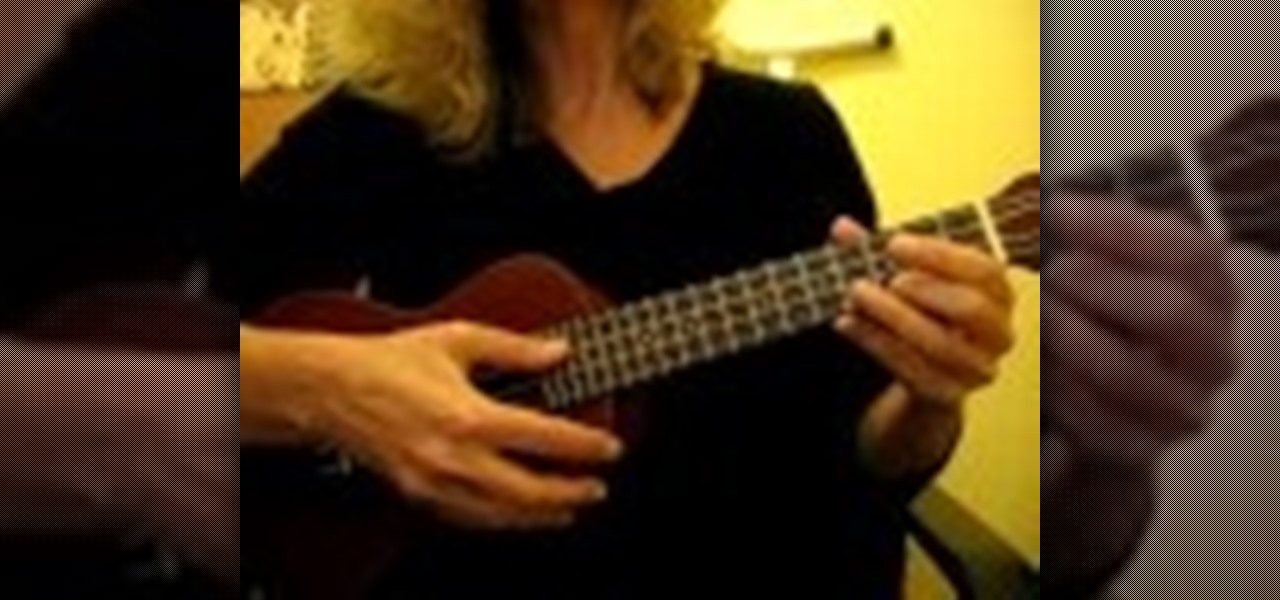
The ukulele is a beautiful and unique stringed instrument that is perfect for the traveling musician because it is so portable and relatively inexpensive. The ukelele is a version of a small guitar that originated in Hawaii. In this tutorial you will learn how to play Spanish piece on the ukulele. Once you get a hang of this beginner song you can impress your friends with this easy Spanish song on your uke.

This how-to video will show you how to cook paella with chicken and shrimp. Paella is a classic Spanish rice dish with chicken, sausage and seafood.
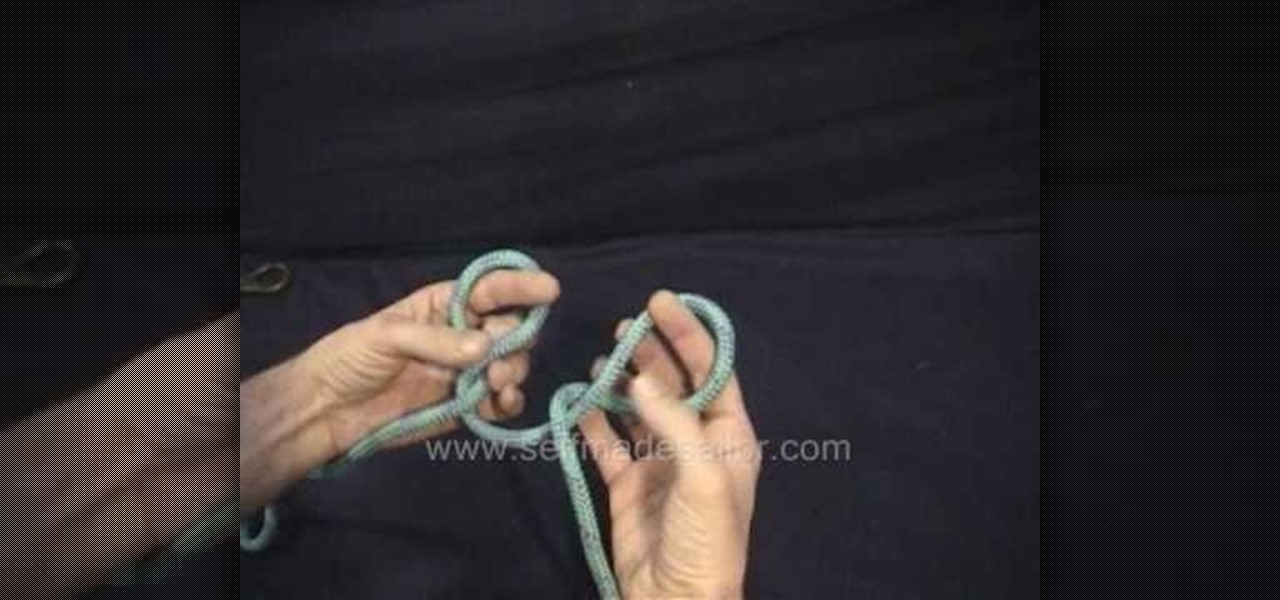
Learn how to tie a Spanish Bowline - a good way of tying a bowline with two loops. This is a fine knot for camping, climbing, sailing or Boy Scout training.
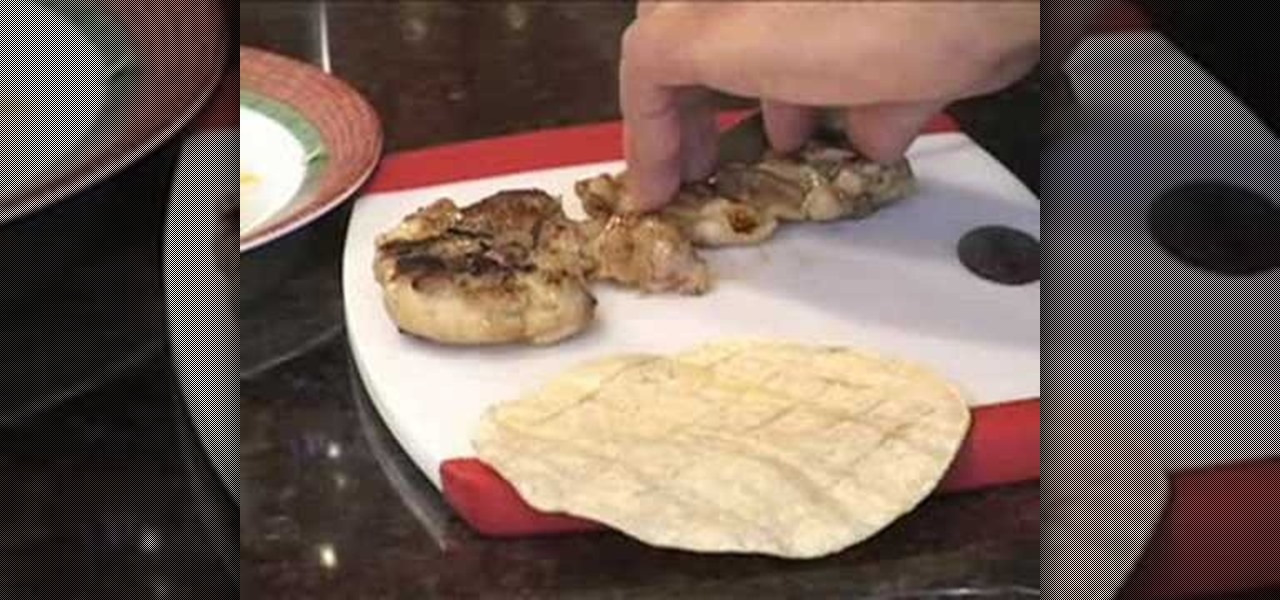
In this cooking how-to video Rachel and chef Mario make a tex-mex classic with a twist. Watch as they shows you how to make this quesadilla with leg meat instead of breast meat, and they also season this cheesy snack with cumin and black pepper. The cumin and black pepper give this quesadilla more Spanish than Tex-Mex.

Mixitxu Etxeberria teaches us how to speak Spanish in this series of videos. Part 1 of 39 - How to Speak Spanish.

Want to whip up a delicious breakfast that's also low in fat and high in fiber? "Delicious" and "healthy" don't seem like they'd go together in the same sentence, but they certainly do when it comes to this recipe.

Fall is going to be in full swing in just a week or two, which means the weather will soon be cooling down and the warm comfort foods will soon be heating up on stoves everywhere.

Beef stew is a classic family favorite. It's a crowd pleaser and a good standby for dinner in a pinch.

Jessie Pray shares her recipe for her famous "Spanish Fly Sangria". To make Spanish Fly Sangria, do the following: Nothing will be measured. Put some ice in a pitcher or bowl. Add some oranges slices, lemon and lime wedges and some apples to the pitcher. Add about a half bottle of cheap red wine. Add some brandy, Triple Sec, and Grand Marnier to the mix. Add some lemon-lime soda, or even some fruit juice. Shake, pour into a glass and do a quick taste test.
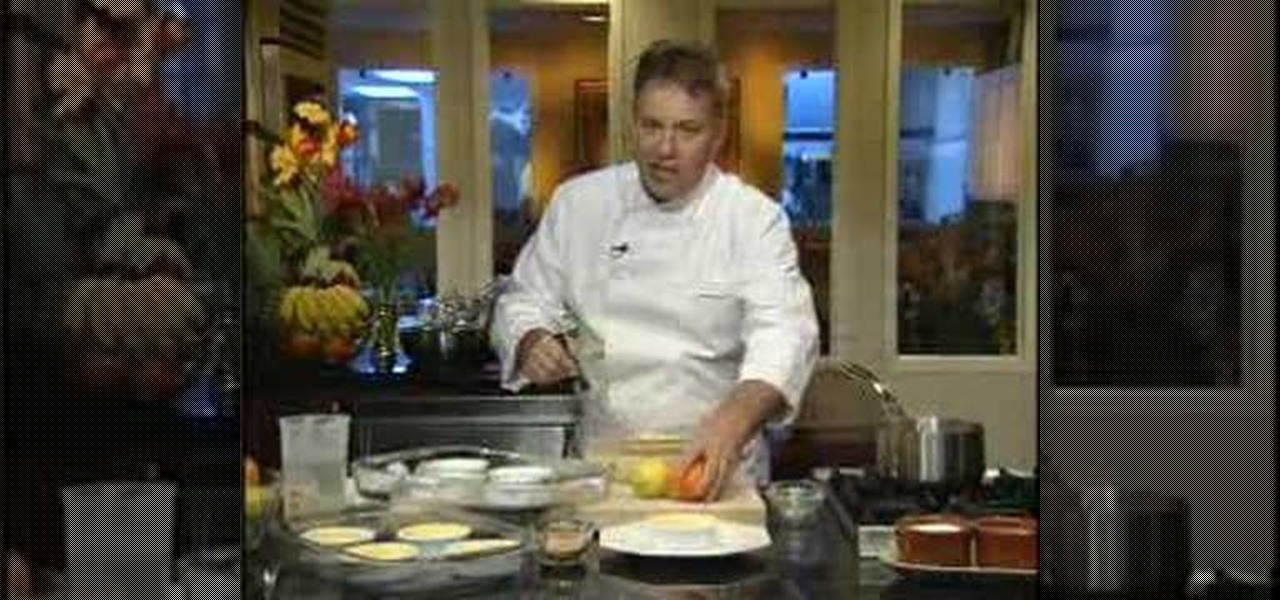
In this how to video Chef Jean Pierre shows you how to prepare this delicious Spanish pudding. Creme Catalana is a cross between a crème caramel and a crème brûlée, but with a citrus twist. Watch and learn how to make a creme Catalana in your own oven.

Learn how to make this Spanish style breakfast omelette. All you need are eggs, onions, potatoes, olive oil, and salt.

How to say/pronounce 'I love you' in Portuguese, Spanish and French. Video: .

In this tutorial, we learn how to make a vegetarian Spanish-style paella. You will need: 1 tbsp olive oil, 1 bay leaf, 1/2 onion, 1.5 c Basmati rice, 1 clove garlic, 1/2 vegetable bouillon, 1/2 green bell pepper, 1 tsp tomato paste, 1 small tomato (chopped), 1 chopped tomato, 3 c water, saffron, salt, and fresh thyme. First, sautŽ your onion with garlic and bell pepper in a skillet with olive oil. Next, add in the tomato and saffron, then add in the bay leaf, rice, and herbs and mix thoroughl...
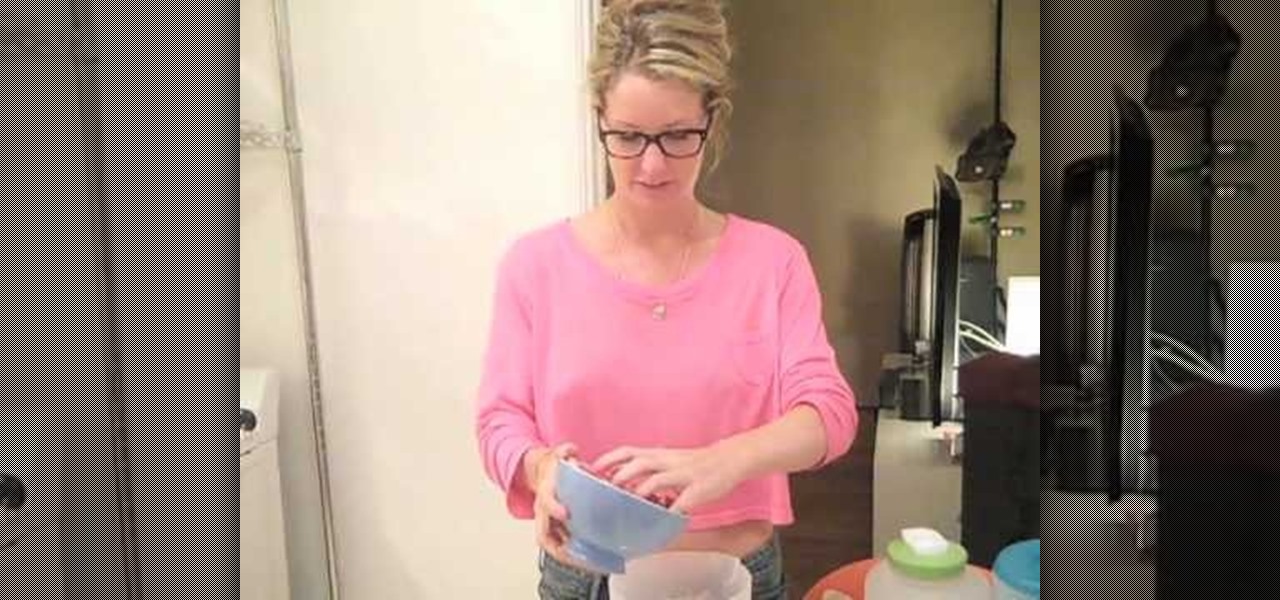
If you've never been a big fan of alcohol because it tastes too strong and bitter, then you should definitely give sangria a try. Sangria is a native Spanish drink that includes a mixture of a light wine (usually fruit flavored), chopped fruit, spices for an extra flavor kick, and a sweetener like honey or orange juice.
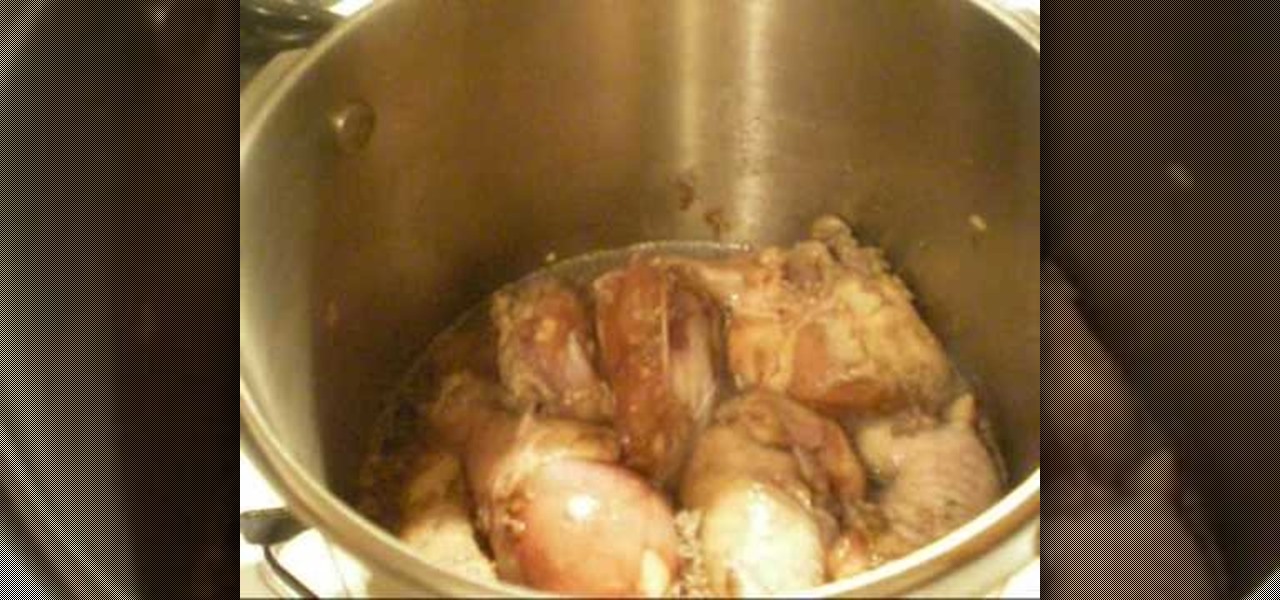
Adobo is a Spanish word for sauce, seasoning or marinade, mainly used in Latin American- and Southwest U.S.-style cooking as well as in the Philippines. The noun form "Adobo" generally describes a marinade or seasoning mix. Adobo is also a style of cooking used in Filipino cuisine. In Filipino cuisine Adobo refers to a common cooking process indigenous to the Philippines, The dish was named after the Spanish who found this indigenous cooking process that involved Stewing with Vinegar, they ca...
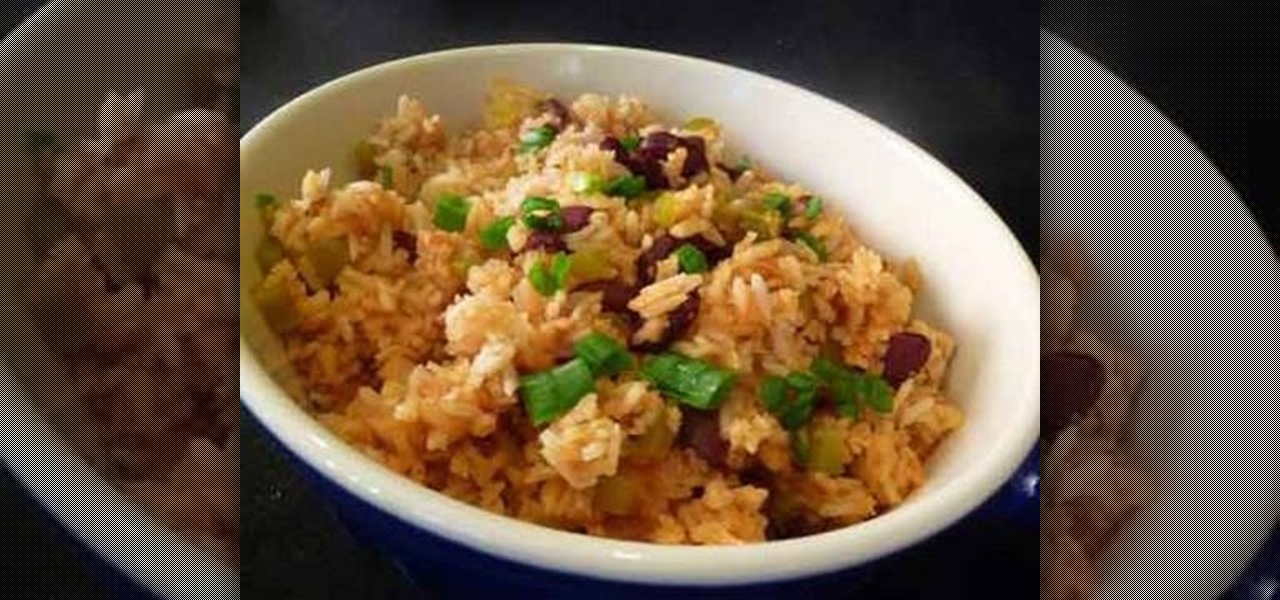
This video shows you how easy it is to make Mexican (Spanish) rice. You start with a pan on medium heat.1 tablespoon of oil, 2 cups of long grain rice. Long grain rice because it’s good for this type of meal. You can get the rice in packets that you won't have to wash the rice. You want a to cook the rice until it gets a little color. Then add 1/2 cup of chopped large onions for 1 minute, 1 can of kidney beans washed and drained, 1 medium bell pepper chopped, and 1/2 teaspoon garlic powder, 1...
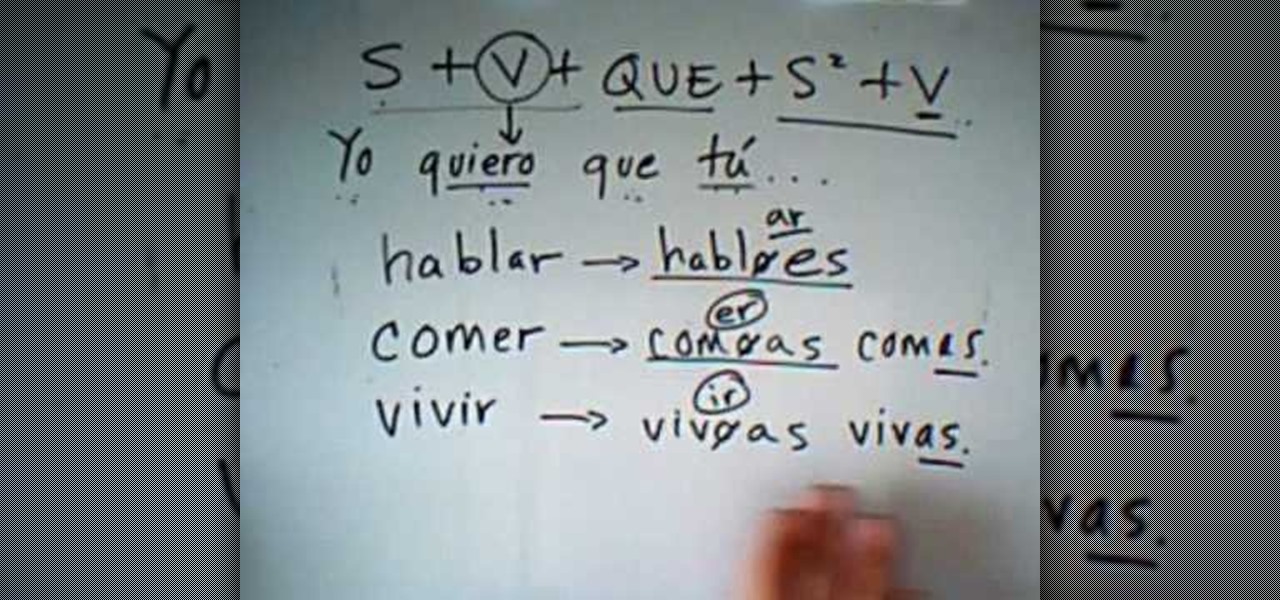
How to conjugate in the subjunctive in Spanish for the present tense.

"Adobada" literally means "marinaded" in Spanish, so "carne adobada," or marinated meat, is an appropriate description for this succulent marinated pork shoulder. This carne adobada is marinated in a mixture of hot sauce, worchestershire sauce, garlic powder, and pepper, then topped with onions.

Paella, the classic Spanish dish of chicken, prawns and rice is one of the most commonly cooked dishes around the world. You can mix things up by tweaking the ingredients such as substituting basmati rice. This video will show you how to cook an Indian style paella.

Chef Jose from Made In Spain is here with some authentic Spanish cooking to teach you. Join Jose as he cooks up some yummy baby squid with caramelized onions. This recipe is incredibly simple and full of rich flavor. Enjoy it as a snack at work or make it for dinner at home.

A variation on a rich and yummy Spanish dessert, this flan recipe is flavored with strawberries instead of traditional vanilla. Learn how to make flan de fresas in your home.
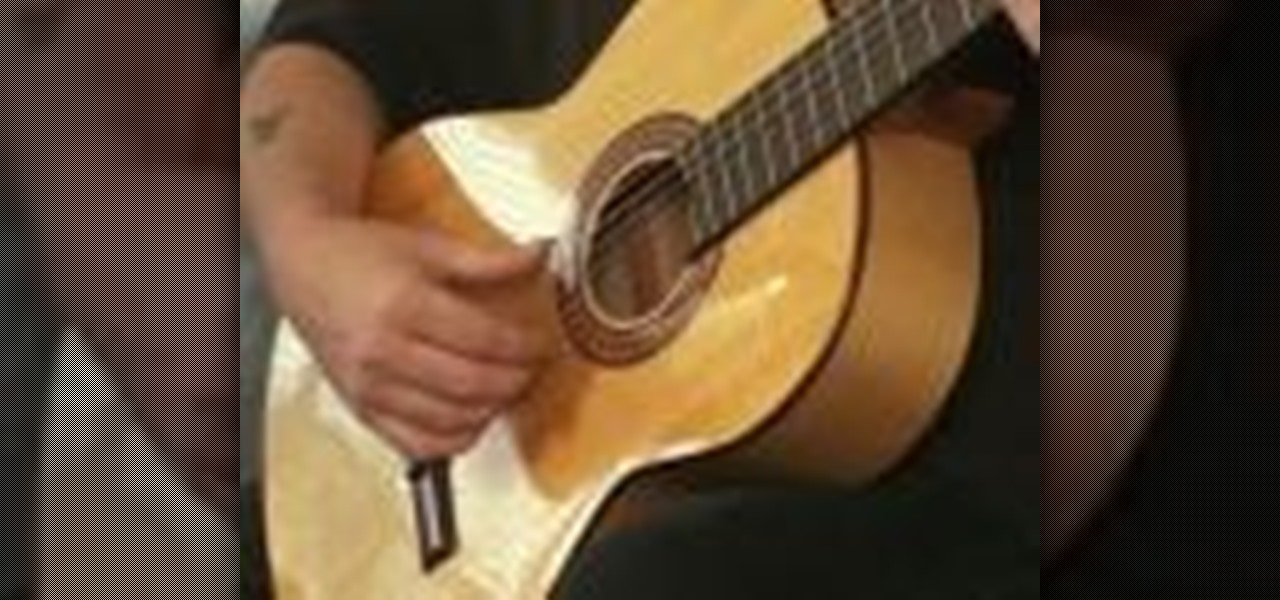
Charles Sedlak shows you to properly tune your guitar in order to play Flamenco. You're just minutes away from playing this Spanish style music, and you can have your girlfriend dance on the table while you pluck those strings.

Charles Sedlak shows you one of the most fun strumming techniques in Flamenco - the Rumba. You won't be able to stop playing this Spanish style music. It's so addicting, like crack, but how would I know.

Originally used by Spanish cowboys for rounding up cattle, the bola is a simple and effective hunting tool. This video shows how to construct and use this weapon so that you can defend yourself, or hunt something, while trying to survive in the wild. You'll need a piece of cord and two equal weights, like some heavy lug nuts.

When it comes to powerful punches, sangria—which takes its name from the Spanish word for "blood"—packs a truly wicked wallop. But don't take our word for it; mix up a batch and let the fiesta begin.